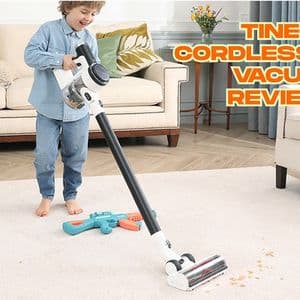Why Price Isn’t Everything in a Vacuum Cleaner
Let’s face it—price can be misleading. Just because a vacuum is inexpensive doesn’t automatically mean it’s low-quality. Likewise, expensive models might offer features you’ll rarely use.
What really matters is value. A budget-friendly vacuum that consistently picks up dirt, manages pet hair, and works across multiple floor types may serve you better than a high-end model with complicated attachments.
So what should you focus on instead?
Key Features to Prioritize on a Budget
If you're shopping with a tighter budget, you want to make every dollar count. Here's what to keep an eye on:
Suction Power and Efficiency
At the core of every good vacuum is its ability to suction dust and debris efficiently. Budget models often use fewer amps or lower wattage, but that doesn’t always mean weaker performance.
Look for designs that are optimized for airflow and come with adjustable settings. Suction tests on multiple floor types can also help indicate whether the vacuum performs well beyond bare surfaces.
Filtration Systems
Why should you care about filters? Because even low-cost vacuums can be irritating if they blow fine dust back into the room. A proper filter system—HEPA or otherwise—helps trap allergens and dust particles, especially for users with respiratory sensitivities.
If you're seeking a vacuum cleaner recommended for allergy-prone homes, ensure it comes with a multi-stage filtration system, even if it's not branded as a premium filter.
Weight and Maneuverability
Here’s where many people regret skipping the research. Some budget vacuums are unnecessarily bulky and hard to move, particularly on stairs or thick rugs. Lightweight, maneuverable units are a better option—especially if you live in a multi-story home or have limited storage space.
A cordless stick vacuum can be a great compromise between performance and portability. They’re slim, easy to store, and effective for day-to-day quick cleans.
Bagged vs. Bagless: Which Is Better on a Budget?
Both styles have pros and cons—and budget versions of each exist.
-
Bagged vacuums: Generally more hygienic when emptying. They’re a smart option for allergy sufferers but come with the added cost of replacement bags.
-
Bagless vacuums: Easier to maintain and don’t require ongoing purchases. However, dust containers can be messy to empty and may require frequent filter cleaning.
If long-term cost matters, bagless models tend to be more economical—just be sure the dust cup is easy to remove and clean.
Corded vs. Cordless: Making the Right Choice
This is where preferences really vary. Corded models tend to provide more consistent power, while cordless units offer unmatched convenience.
But what if you're looking for cordless hoovers that don’t break the bank?
Lower-cost cordless vacuums are often lighter and more compact, making them perfect for small apartments or quick clean-ups. Just be aware of battery life. Models with under 20 minutes of runtime may require recharging in the middle of a job.
Pro Tip: Look for models with removable batteries. This makes it easier to upgrade later or purchase a spare if needed.
Dust Capacity and Maintenance
Here’s something you might not think about until it’s too late: how often will you need to empty the bin?
Small-capacity vacuums are common in the budget category and might be fine for smaller households. But if you have pets or kids, you’ll want something that can go longer between empties.
Also, check if the filters and brushes are easy to clean or replace. Maintenance ease can make or break the long-term value of your purchase.
Accessories: Do You Really Need Them?
Some budget vacuums come with a long list of tools. That sounds great—until you realize you only ever use one or two.
Here’s a better approach: Focus on tools you’ll actually use, like a crevice tool for tight spots, a dusting brush for shelves, or a motorized pet tool if you have animals. Extra attachments may look appealing, but they can add to the cost without adding real utility.
Reliability and Durability
Even on a budget, durability matters. A poorly built vacuum might save you money upfront but cost more in repairs or replacements down the line.
Look for signs of build quality in product specs and reviews:
-
Are the wheels and body solidly constructed?
-
Are the filters washable or replaceable?
-
Does the design feel intuitive to use?
Durability isn’t just about how long the vacuum lasts—it’s about how well it continues to perform as it ages.
Who Should Consider a Budget Vacuum?
Here’s the truth: Budget vacuums aren’t for everyone—but they are the right choice for many.
You might consider a budget option if you:
-
Live in a smaller home or apartment
-
Need a secondary unit for upstairs or quick cleanups
-
Want a starter model for a first home or college dorm
-
Prioritize affordability over premium features
When chosen wisely, even a low-cost model can meet your cleaning needs for years with minimal compromise.
Final Thoughts
Finding the best budget vacuum cleaner is not about chasing the lowest price tag—it’s about identifying the model that meets your needs while offering reliable performance. Whether you're drawn to the compact convenience of a cordless stick vacuum, the allergen control of a bagged system, or the everyday practicality of cordless hoovers, there's a smart choice for every home.
The key is understanding your priorities: suction power, filtration, maneuverability, and ease of maintenance. Once you have a clear picture of what matters most, you can confidently narrow down your options.
Armed with the right information, your next vacuum cleaner purchase won’t just be affordable—it’ll be a decision you feel good about every time you clean.





















